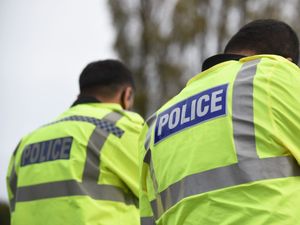Could the Tories be set for electoral wipeout in 2024?
Our Political Editor Peter Madeley on the new poll indicating Tories have a mountain to climb.
The Tories are set for electoral wipeout across the Black Country, Staffordshire and Shropshire, according to a new poll.
The latest MRP model from Savanta gives Labour an historic 314-seat Commons majority at the next general election, which is expected to be in 2024.
And across our region the Conservatives would lose all but four seats as part of a ‘Red Wall’ collapse that would see Rishi Sunak’s party get hammered in the Midlands and the north.
According to the model, Labour would take 23 seats from the Conservatives and an additional one from the Lib Dems.
In the Black Country, nine seats would turn from blue to red, meaning Labour would control all but one of the area’s constituencies.
Of the 13 seats only Aldridge-Brownhills, which is currently held by Wendy Morton, would stay Tory. Wyre Forest would also turn red.
Across Staffordshire Labour would go from having no seats at all to controlling 10 of 12 constituencies, according to the poll.
Mr Sunak’s party would be left with just Lichfield, currently held by Michael Fabricant, and Sir Gavin Williamson’s South Staffordshire seat.
And the picture is equally bleak for the Tories in Shropshire, where only Ludlow is expected to remain blue.
The poll has Labour picking up Telford, The Wrekin and Shrewsbury and Atcham from the Tories.

Meanwhile, Sir Keir Starmer’s party would also take North Shropshire, which the Lib Dems won from the Conservatives in a by-election this year after overturning a near-23,000 majority.
Elsewhere in the West Midlands, Birmingham would not be left with a single Conservative MP, although the party would cling on to Bromsgrove, where former Chancellor Sajid Javid is standing down.
Among the MPs who would lose their seats would be Prime Minister Rishi Sunak, whose Richmond seat in Yorkshire would go to Labour for the first time in history.
Meanwhile, the Esher and Walton seat of Dominic Raab – Justice Secretary and Deputy Prime Minister – would go to the Lib Dems, who would increase their parliamentary representation to the highest level since 2010 according to the poll.
Pollsters have urged caution, saying that many of the seats going to Labour in the model still have a 40 per cent or higher chance of staying Tory.
The poll does not take into account boundary changes, which could come into force before the next election.
The result would see Labour end up on 482 seats to the Conservatives’ 69, marking a monumental turnaround from the 2019 general election, which saw most of our region turn blue as Boris Johnson stormed to victory with an 80-seat majority.
And by winning an extra 280 seats, Labour would eclipse its performance under Tony Blair in 1997 when the party gained 132 seats to hold a Commons majority of 129.
Savanta’s last polling using the MRP model, published in September before the collapse of Liz Truss’s administration, gave Labour a 56-seat majority.
Chris Hopkins, political research director at Savanta, said even the most optimistic Labour supporter would not have foreseen what was to come.
“This latest MRP model reflects the position now, of two parties experiencing widely differing electoral fortunes,” he said.
“But we must still express caution. Many seats going to Labour in this model, including a few that could be deemed ‘Red Wall’, still indicate a 40 per cent or higher chance of remaining Conservative, and while that would have little impact on the overall election result, it does show that if Rishi Sunak can keep narrowing that Labour lead, point-by-point, the actual results come 2024 could look very different to this model.”
Savanta’s MRP voting intention polling has Labour on 48 per cent, the Conservatives on 28 per cent, the Lib Dems on 11 per cent and Reform UK on four per cent.
After the chaos of three Prime Ministers in 2022, the Conservatives are battling to regain support, with parts of the West Midlands openly targeted by Labour.
They believe the region is ripe for the picking, with a number of seats that turned Conservative for the first time in 2019 pencilled in as ‘must wins’.
They include Wolverhampton North East, which Jane Stevenson won for the Tories in 2019 with a majority of 4,080 after years of Labour domination.
Local members have already selected a candidate for the seat, with local deputy headteacher Sureena Brackenridge already out on the campaign trail.
Neighbouring constituency and key marginal Wolverhampton South West is also on the hit list, although Labour is struggling to find a suitable candidate to contest the seat.
Labour’s electoral team is also confident of regaining both West Bromwich seats, which had been strongholds for the party prior to the last national poll.
And Telford and Shrewsbury – where the Tory majorities stand at above 10,000 – are in the line of fire.
In Staffordshire, Cannock Chase, which has not had a Labour MP since 2005, is considered a realistic possibility despite current Tory MP Amanda Milling’s near-20,000 majority.
Labour also believes there is a strong chance of overturning Theo Clarke’s 14,377 majority in Stafford.
It was in Shropshire where signs of the potential for a Tory vote collapse in 2024 first emerged.
The by-election in North Shropshire in 2021 – triggered after the resignation of Owen Paterson – saw Lib Dem Helen Morgan take the seat after a gigantic 34 per cent swing from the Tories.
The result showed that majorities of 20,000 plus were not safe, and was followed up by further by-election defeats for the Conservatives in 2022.
That said, the chances of Labour sweeping to success at the next election in North Shropshire would appear to be slim – particularly as the party was rumoured to have pretty much stood aside last year amid claims of an election pact between the two opposition parties.
The Conservative Party will take solace in the fact that with the best part of two years to go until the next general election, there is plenty of time for the situation to change.
When Theresa May saw her Commons majority whittled down at the 2017 snap election on the back of Brexit mayhem, no one could have predicted the rise in the party’s fortunes that occurred just 30 months later.
If – and it is a big ‘if’ – Mr Sunak can make genuine inroads on key policy areas such as immigration and levelling up, and he gets a fair slice of luck with some of the global issues that are beyond his control, then all may not yet be lost.
According to other polls conducted in November, the Conservatives had started to regain ground on Labour following Mr Sunak’s election as party leader, cutting the lead from an average of 30 points to 20.
And Savanta’s own voting intention poll in early December had Labour’s lead down to a much-reduced 11 points.
However, polling expert Sir John Curtice said that any recovery had now “probably come to a halt”.





